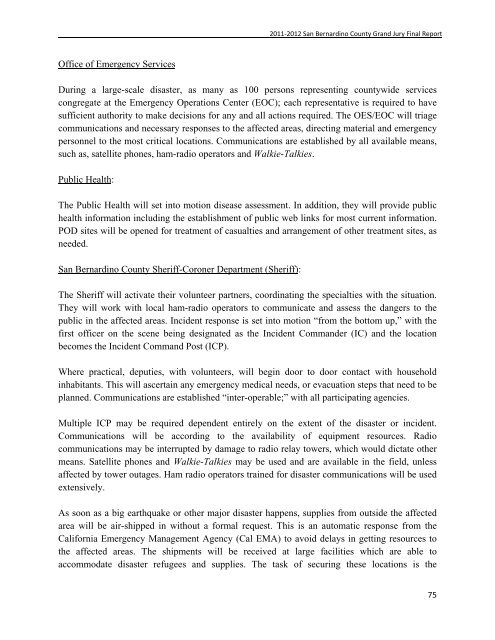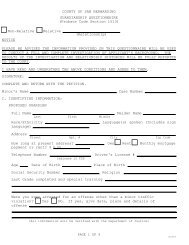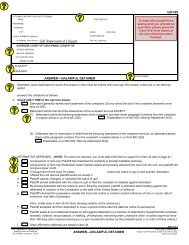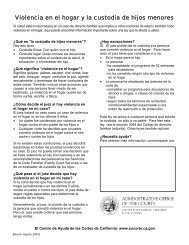FINAL REPORT - San Bernardino Superior Court
FINAL REPORT - San Bernardino Superior Court
FINAL REPORT - San Bernardino Superior Court
You also want an ePaper? Increase the reach of your titles
YUMPU automatically turns print PDFs into web optimized ePapers that Google loves.
2011‐2012 <strong>San</strong> <strong>Bernardino</strong> County Grand Jury Final Report<br />
Office of Emergency Services<br />
During a large-scale disaster, as many as 100 persons representing countywide services<br />
congregate at the Emergency Operations Center (EOC); each representative is required to have<br />
sufficient authority to make decisions for any and all actions required. The OES/EOC will triage<br />
communications and necessary responses to the affected areas, directing material and emergency<br />
personnel to the most critical locations. Communications are established by all available means,<br />
such as, satellite phones, ham-radio operators and Walkie-Talkies.<br />
Public Health:<br />
The Public Health will set into motion disease assessment. In addition, they will provide public<br />
health information including the establishment of public web links for most current information.<br />
POD sites will be opened for treatment of casualties and arrangement of other treatment sites, as<br />
needed.<br />
<strong>San</strong> <strong>Bernardino</strong> County Sheriff-Coroner Department (Sheriff):<br />
The Sheriff will activate their volunteer partners, coordinating the specialties with the situation.<br />
They will work with local ham-radio operators to communicate and assess the dangers to the<br />
public in the affected areas. Incident response is set into motion “from the bottom up,” with the<br />
first officer on the scene being designated as the Incident Commander (IC) and the location<br />
becomes the Incident Command Post (ICP).<br />
Where practical, deputies, with volunteers, will begin door to door contact with household<br />
inhabitants. This will ascertain any emergency medical needs, or evacuation steps that need to be<br />
planned. Communications are established “inter-operable;” with all participating agencies.<br />
Multiple ICP may be required dependent entirely on the extent of the disaster or incident.<br />
Communications will be according to the availability of equipment resources. Radio<br />
communications may be interrupted by damage to radio relay towers, which would dictate other<br />
means. Satellite phones and Walkie-Talkies may be used and are available in the field, unless<br />
affected by tower outages. Ham radio operators trained for disaster communications will be used<br />
extensively.<br />
As soon as a big earthquake or other major disaster happens, supplies from outside the affected<br />
area will be air-shipped in without a formal request. This is an automatic response from the<br />
California Emergency Management Agency (Cal EMA) to avoid delays in getting resources to<br />
the affected areas. The shipments will be received at large facilities which are able to<br />
accommodate disaster refugees and supplies. The task of securing these locations is the<br />
75
















